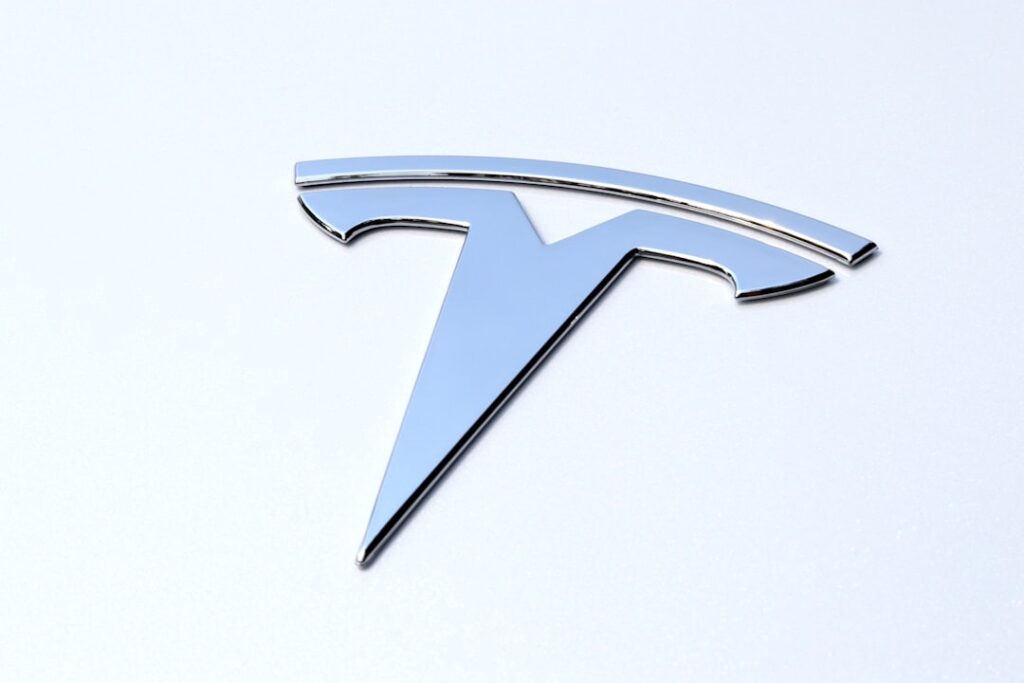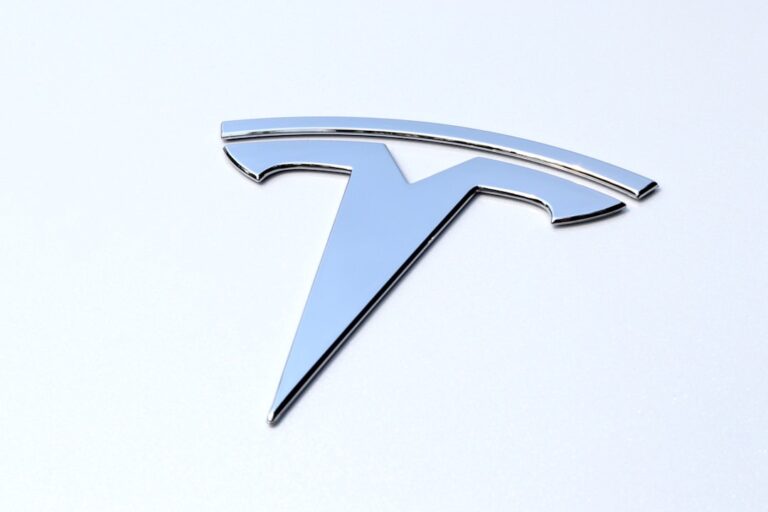
Tesla stock (NASDAQ: TSLA) has demonstrated notable momentum today, continuing its recovery from recent turbulence while maintaining a significant premium over traditional automakers. As of 11:57 AM EDT on March 14, 2025, Tesla trades at $249.23, representing a 3.43% increase from its previous close of $240.68, outpacing broader market gains and extending the bullish trend seen earlier this week. This comprehensive analysis examines Tesla’s current market position, recent price catalysts, financial metrics, and forward-looking projections to provide investors with a complete picture of the stock’s prospects in the evolving automotive landscape.
Current Price Performance and Market Position
Tesla’s stock has demonstrated significant intraday volatility, with prices ranging from a low of $240.74 to a high of $250.64 during today’s trading session. The morning trading pattern shows steady upward momentum, with the stock gaining strength throughout the session after opening at $247.31. With a current market capitalization of approximately $800.72 billion, Tesla continues to dwarf traditional automotive manufacturers despite producing a fraction of their vehicle volume. The company’s valuation reflects investor confidence in its leadership position within the electric vehicle market and potential for technological disruption across multiple industries.
The stock’s recent performance comes in the context of a broader recovery from its 52-week low of $138.80, though it remains significantly below its 52-week high of $488.54. This trading range illustrates the considerable volatility that has characterized Tesla’s market performance over the past year, presenting both opportunities and challenges for investors with varying time horizons. The current price sits below both its 50-day moving average of $354.97 and 200-day moving average of $282.33, indicating that despite recent gains, the stock has not yet fully recovered from its longer-term downtrend.
Tesla’s trading volume stands at approximately 52.92 million shares, which falls below its average daily volume of 103.67 million shares. This lower-than-average volume during a positive price movement could suggest cautious optimism rather than overwhelming bullish sentiment, potentially indicating that investors are still evaluating the sustainability of the current recovery before committing more substantial capital to the position.
Recent Catalysts and Market Reaction
Tesla’s recent price action has been influenced by several significant developments that have shifted investor sentiment. On March 12, 2025, the stock experienced an 8% surge following the release of better-than-expected inflation data, which showed the Consumer Price Index (CPI) increasing by 2.8% year-over-year in February, below economists’ forecast of 2.9% and January’s 3.0% rate1. Similarly, Core CPI, which excludes volatile food and energy categories, rose at a 3.1% annual rate, coming in below both the estimated 3.2% and the previous month’s 3.3%1. These favorable inflation readings bolstered investor hopes that the Federal Reserve might resume interest rate cuts, creating a more accommodative environment for growth stocks like Tesla.
The company has also benefited from a surprising source of positive sentiment: political support from President Trump. After previously announcing his intention to purchase a Tesla vehicle, the President hosted CEO Elon Musk at the White House, where he publicly examined five Tesla models and expressed plans to acquire a Model S1. This presidential endorsement represents a significant shift in the relationship between Trump and Musk, which has historically fluctuated between supportive and adversarial. Investors appear to have interpreted this public display of approval positively, viewing it as potentially beneficial for Tesla’s regulatory and business environment in the coming years.
These catalysts have temporarily overshadowed concerns about increasing competition in the electric vehicle market and Tesla’s premium valuation relative to earnings. The interplay between macroeconomic factors, political developments, and company-specific fundamentals continues to create a complex investment landscape for Tesla shareholders, requiring careful consideration of multiple variables beyond traditional financial metrics.
Financial Metrics and Competitive Positioning
Tesla’s current financial profile presents a stark contrast to traditional automakers, highlighting both the premium investors place on its growth potential and the challenges it faces in justifying its valuation through conventional analysis. With a price-to-earnings ratio of 122.63 (or 138.18 according to Morningstar), Tesla trades at a valuation multiple dramatically higher than competitors like Ford (5.15) and General Motors (4.58)3. This disparity extends to other metrics, with Tesla’s price-to-sales ratio of 12.74 dwarfing Ford’s 0.21 and GM’s 0.29, reflecting investor expectations of exponential revenue growth and market disruption rather than current financial performance3.
Despite these premium valuation metrics, Tesla does demonstrate some financial strengths that support its investment case. The company maintains stronger liquidity positions than its traditional competitors, with a quick ratio of 1.42 compared to Ford’s 0.98 and GM’s 0.90, and a current ratio of 2.02 versus 1.16 and 1.13 for Ford and GM respectively3. These superior liquidity metrics provide Tesla with greater financial flexibility to weather market downturns and invest in growth initiatives without immediate concern for short-term financing needs.
Tesla’s earnings per share currently stand at $2.03, which represents modest profitability given the company’s ambitious growth plans and substantial research and development investments. The stock’s high P/E ratio indicates that investors are prioritizing future earnings potential over current profitability, betting on Tesla’s ability to leverage its technological advantages and brand strength into sustained competitive advantages across multiple markets.
Price Forecasts and Analyst Perspectives
Analysts and forecasting services present divergent views on Tesla’s future price trajectory, reflecting the significant uncertainty surrounding the company’s growth prospects, competitive positioning, and ability to maintain premium pricing in an increasingly crowded market. Morningstar assigns Tesla a fair value estimate of $250.00 (as of January 30, 2025), placing the current trading price very close to their assessment of fundamental value3. This fair value determination suggests that, according to Morningstar’s analysis, Tesla shares are currently appropriately priced relative to their long-term earnings potential and competitive position.
In contrast, Long Forecast provides a more volatile price prediction, anticipating significant near-term downside followed by substantial recovery and growth over a multi-year horizon2. Their forecast projects Tesla’s stock price to decline to $220 by the end of March 2025 (a 24.9% drop from initial March levels), with further deterioration to $171 by May 20252. However, they subsequently expect a reversal of this downtrend, with prices recovering to $304 by December 2025, $404 by December 2026, and potentially reaching $547 by early 2028, which would represent an 86.7% increase from current levels2.
These contrasting forecasts highlight the high degree of uncertainty surrounding Tesla’s future performance and the sensitivity of its valuation to changes in growth expectations, market conditions, and competitive dynamics. The bull case for Tesla emphasizes its potential to disrupt both automotive and power generation industries through technological innovation in electric vehicles, autonomous driving, batteries, and solar systems3. Conversely, the bear case focuses on intensifying competition from traditional automakers and new entrants, which could force Tesla to reduce prices and accept lower profit margins as the electric vehicle market matures3.
Industry Context and Competitive Challenges
Tesla operates in an increasingly competitive landscape where traditional automakers are accelerating their transition to electric vehicles while numerous startups and tech companies seek to capture market share in this growing segment. Major manufacturers including Toyota, Mercedes-Benz, BMW, General Motors, Honda, Stellantis, and Ford have all made substantial commitments to electrification, allocating billions in capital expenditures toward developing competitive electric vehicle portfolios3. Chinese manufacturers, particularly companies like Li Auto, represent additional competition in the world’s largest automotive market3.
This intensifying competitive environment presents significant challenges for Tesla’s ability to maintain its market share and premium pricing. Traditional manufacturers benefit from established production infrastructure, global supply chains, and dealer networks that can be leveraged to scale electric vehicle production rapidly once initial development investments are complete. Additionally, these competitors often have greater financial resources and diversified revenue streams that can subsidize electric vehicle development during the transition period.
Tesla’s response to these competitive pressures will likely determine its long-term success and justify its premium valuation. The company’s vertical integration strategy, encompassing vehicle production, battery manufacturing, software development, charging infrastructure, and energy products, creates potential competitive advantages through system-wide optimization and reduced dependency on external suppliers. However, this approach also requires substantial capital investment and increases operational complexity compared to more focused strategies.
Future Growth Catalysts and Risk Factors
Tesla’s future growth prospects depend on several key catalysts that could potentially drive revenue expansion and margin improvement in the coming years. The company continues to develop new vehicle models targeted at different market segments, including more affordable options that could significantly expand its addressable market3. Additionally, Tesla’s autonomous driving technology represents a potential high-margin revenue stream if the company can achieve true self-driving capabilities ahead of competitors and navigate the complex regulatory environment surrounding this technology.
Beyond its automotive business, Tesla’s energy generation and storage segments offer additional growth vectors that could help diversify revenue and capitalize on the global transition to renewable energy. The company’s battery technology, solar panels, and solar roof products position it to participate in both residential and utility-scale energy markets, potentially creating synergies with its vehicle charging infrastructure.
However, Tesla faces substantial risks that could impede its ability to achieve projected growth targets. Pricing pressure from increasing competition may compress margins, particularly if government incentives for electric vehicle purchases are reduced over time. Supply chain constraints, battery material availability, and manufacturing capacity limitations could restrict Tesla’s ability to scale production to meet demand. Regulatory challenges, particularly around autonomous driving technology, create additional uncertainty regarding the timeline for realizing the full potential of Tesla’s software capabilities.
Investment Implications and Valuation Considerations
For investors considering Tesla stock, the decision largely hinges on one’s time horizon, risk tolerance, and perspective on the company’s ability to maintain technological leadership while successfully scaling production. The stock’s current valuation incorporates substantial expectations for future growth and market disruption, leaving little margin for error if execution falls short of these ambitious targets.
Tesla’s price-to-earnings ratio of 122.63 requires significant earnings growth to justify its current valuation through traditional financial analysis. At this multiple, the market is effectively pricing in years of sustained high-margin revenue growth and successful expansion across multiple product categories. Investors with shorter time horizons or lower risk tolerance may find this valuation difficult to justify based on near-term financial metrics and competitive realities.
Conversely, those with a longer-term perspective and higher conviction in Tesla’s disruptive potential may view the current price as reasonable relative to the company’s total addressable market across automotive, energy, and software segments. Tesla’s brand strength, technological capabilities, and first-mover advantages in electric vehicles provide some defensive moat against competition, potentially supporting premium pricing and margins even as the market becomes more crowded.
Conclusion
Tesla stock continues to represent one of the market’s most polarizing investment opportunities, with its current price reflecting a complex interplay of genuine technological innovation, ambitious growth projections, macroeconomic factors, and evolving competitive dynamics. At $249.23, the stock trades near Morningstar’s fair value estimate of $250.00, suggesting that current prices may appropriately balance risk and reward factors for investors with moderate growth expectations3.
The stock’s recent positive momentum, driven by favorable inflation data and political support, demonstrates how Tesla remains sensitive to both macroeconomic conditions and sentiment shifts beyond company fundamentals1. This volatility creates both opportunities and risks for investors, requiring careful position sizing and time horizon management to navigate successfully.
As the electric vehicle market continues to evolve and competition intensifies, Tesla’s ability to maintain its technological edge while improving manufacturing efficiency and expanding into new markets will determine whether it can generate the substantial earnings growth needed to justify its premium valuation. For investors considering Tesla stock, the investment decision should reflect not just an assessment of the company’s capabilities, but also a perspective on the broader transformation of the automotive and energy industries in which Tesla aims to play a central role.
Citations:
- https://www.nasdaq.com/articles/why-tesla-stock-surging-today-1
- https://longforecast.com/tesla-share-price-predictions-2017-2018-2019
- https://www.morningstar.com/stocks/xnas/tsla/quote
- https://www.cnn.com/markets/stocks/TSLA
- https://www.forbes.com/sites/shaharziv/2025/03/11/tesla-stock-plummets-50-since-december-heres-how-investors-can-manage-the-volatility/
- https://stockanalysis.com/stocks/tsla/
- https://www.nasdaq.com/market-activity/stocks/tsla
- https://www.cnbc.com/2025/03/12/tesla-shares-second-day-steepest-drop-since-2020-musk-trump.html
- https://www.businessinsider.com/tesla-stock-decline-jp-morgan-analyst-guidance-2025-3
- https://www.tradingview.com/symbols/NASDAQ-TSLA/
- https://www.cnbc.com/2025/03/10/tesla-shares-plunge-14percent-head-for-worst-day-in-five-years.html
- https://www.nytimes.com/2025/03/13/business/tesla-china-sales-elon-musk.html
- https://finance.yahoo.com/quote/TSLA/news/
- https://www.nytimes.com/2025/03/10/business/tesla-stock-market-elon-musk.html
- https://www.forbes.com/sites/zacheverson/2025/03/13/marjorie-taylor-greene-tesla-elon-musk-doge-department-justice-fbi-stock/
- https://www.cnbc.com/quotes/TSLA
- https://uk.finance.yahoo.com/news/tesla-unveils-stripped-down-affordable-144131428.html
- https://www.reuters.com/business/autos-transportation/tesla-plans-model-y-costing-least-20-less-produce-defend-china-share-sources-say-2025-03-14/
- https://finance.yahoo.com/quote/TSLA/
- https://www.barrons.com/articles/tesla-stock-price-target-cut-analyst-b253e99b
Answer from Perplexity: pplx.ai/share
